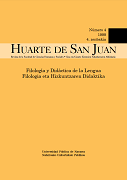Ana Ozores y Malena: pervivencia de unos caracteres
Keywords:
Mujeres en la literaturaAbstract
Twentieth-century novel is the result of the evolution which narrative has experimented from the 19th century up to nowadays. However, current narrations still recreate the same nineteenth-century themes of seduction and adultery. This is the case of “Malena es un nombre de tango” with regard to “La Regenta”. Both novels present heroines with similar features, together with main characters showing the same actions, ideas and thoughts, at the same rime repeated by means of the same objects, which imply a similar semiotic meaning. All this helps outline the unity of this work.
Downloads
References
ADAM, J. M. Le récit. París: PUF, 1984.
ALAS, Leopoldo. La Regenta. Ed. Juan Oleza. Madrid: Cátedra, 1989, 2 vols.
FRIEDMAN, N. Fonn and meaning in Fiction. Athens, University of Georgia, 1975.
GRANDES, Almudena. Malena es nombre de tango. Barcelona: Tusquets, 1994
GREIMAS, Algirdas J. y FONTANILLE Jacques. Semiótica de las pasiones. México, Siglo XXI, 1994
KUNZ, Marco. El final de la novela .. Madrid: Gredos, 1997.
MAFFESOLI, M. Aux creux des apparence. París, Plon, 1990.
RODRIGO ALSINA, Miquel. Sociosemiótica de las pasiones. Semiótica y Modernidad, Actas del V congreso Internacional de la Asociación Española de Semiótica. A Coruña, Universidade da Coruña, 1992. vol. I, pags . 225-232.
SCHOLES, R. Elements of Fiction. New York: Oxford University Press, 1968.
SIRERA TURO, Josep Lluis. La historia política de España en el siglo XIX, vista a través de una familia: Los Ozores de Vetusta. Actas del Simp. lntern . Univ. Oviedo, 1984. Oviedo, 1 987.
Downloads
Published
How to Cite
Issue
Section
License
All articles are published under a Creative Commons (BY-NC-ND 4.0) license. Each article will be assigned a DOI.
Authors retain copyright of their work and grant the journal the right to the first publication. Authors can sign additional agreements to non-exclusive distribution of the published version of the article (for example, in an institutional repository) as long as appropriate attribution to the original publication is provided. Articles can be uploaded to institutional repositories immediately after publication.
Electronic distribution of the articles (for example, academic social networks or personal webpages) is allowed and encouraged.
The journal reserves the right to publicise the work in social networks and other electronic means.







